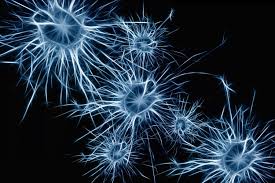Distinct molecular mechanisms can generate the same features in different neurons, a team of scientists has discovered. Its findings, enhance our understanding of brain cell development, according to Science Daily.
“We now have a better comprehension of how neurons form and acquire the features that allow them to fulfill their function in neural circuits that lead to specific behaviors,” explains Nikos Konstantinides, a post-doctoral fellow at New York University’s Department of Biology and one of the paper’s lead authors. “These results point to several potential pathways for medical advancement, such as directing stem cells towards specific neuronal types that can be used to treat brain diseases by cell replacement therapy or by triggering neural stem cells to replace damaged tissue.”
The brain contains many types of neurons that control our behavior; each neuron has distinct features that allow them to exert different functions. In order to regulate their interactions, neurons communicate with each other using specific chemicals called neurotransmitters.
The focus of the research were the neurons in the visual system of the fruit fly Drosophila, which is commonly studied in deciphering the basic principles that direct the functions of the brain.
Conducted in the laboratories of Professor Claude Desplan, the study deployed a cutting-edge technology, Drop-seq, to sequence the genes expressed in each of tens of thousands of cells.
Their results showed that different neuronal types in the fly visual system can acquire similar features — specifically, expression of the same neurotransmitter — using different mechanisms.
More broadly, the researchers discovered that this dynamic applies to other neuronal characteristics, resulting in a deeper understanding of how complex brain tissue composed of hundreds of interconnected cell types can form.
“The human brain is extremely complex and contains neurons belonging to thousands of cell types, rendering it technically very challenging to study and to understand how neurons are generated and specified,” explains Katarina Kapuralin, a post-doctoral researcher at NYU Abu Dhabi and the study’s other lead author. “It is therefore necessary to study simpler nervous systems where we can use new technology to understand each of the cells that compose these brains. This will help us define fundamental rules that apply to more complex nervous systems.”
N.H.Kh

